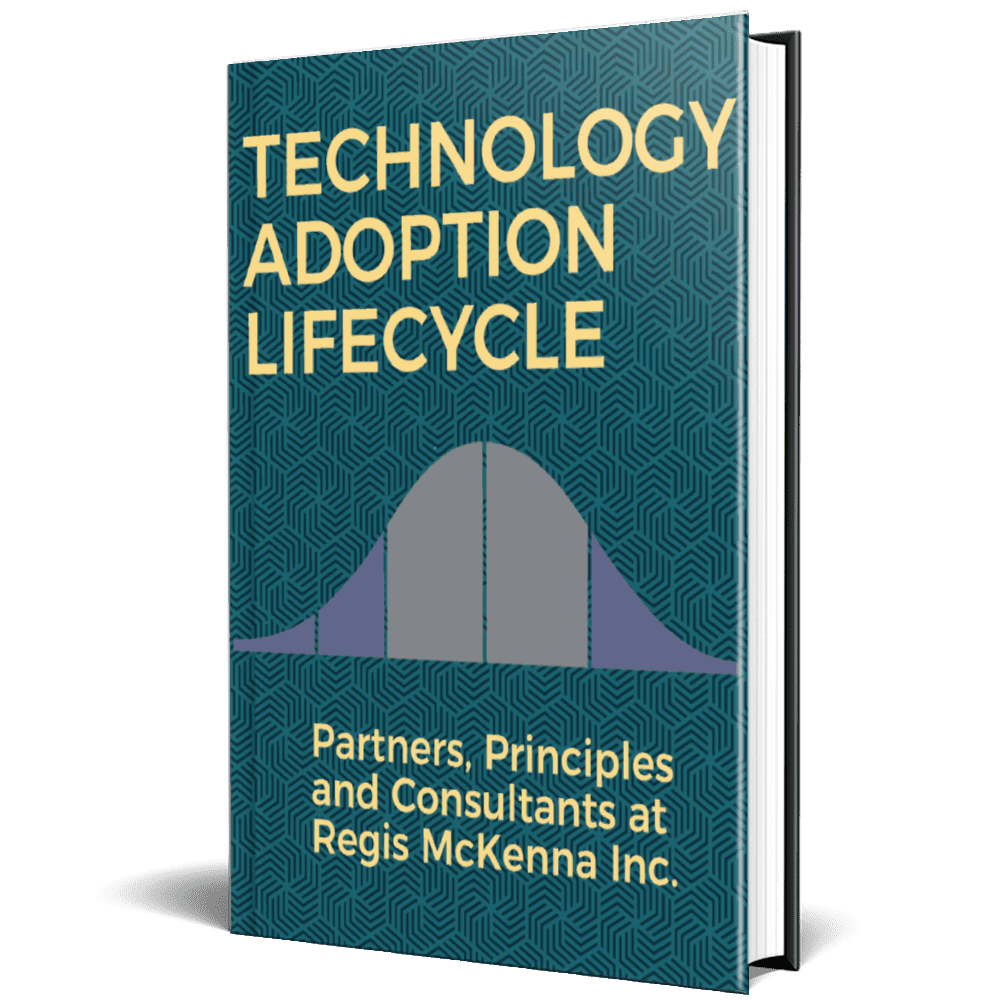
Technology Adoption Lifecycle
Useful insight at all stages of high-tech market development
Everett Rogers’ research and subsequent development of Diffusion of Innovations was based on studying farmers and their willingness to adopt a new type of hybrid corn seed.
In 1989, a group of senior consultants and partners at Regis McKenna Inc. updated the psychographic descriptions of the defined adopter groups in the Rogers’ diffusion model.
The original descriptions and characteristics of farmers created by Everett Rogers, were translated into descriptions of high-tech buyers. The task force developed new descriptions of each adopter type, renamed each group, and also renamed the diffusion framework. The result of this update was the Technology Adoption Lifecycle.
The technology adoption lifecycle is one of the most well established models in high-tech product marketing because it provides useful insight at all stages of market development.
The underlying thesis of technology adoption lifecycle is that innovations are absorbed into any given market segment in stages corresponding to psychological and social profiles of people within that user community. The sequence of adoption types goes from the early market which is made up of Innovators and Early Adopters to the mainstream market.

A Predictable Sequence

Despite a track record of proven success, the Technology Adoption Lifecycle is counterintuitive to most business managers. When struggling for survival, an organization will find it incongruous to focus on the peculiar or specialized needs of a small group of potential buyers, before addressing the more common needs of larger groups. Too often managers attempt to serve an entire market all at once, and unintentionally delay the market adoption process.
The inescapable task of winning over a sequence of buyer types, combined with the necessity of promoting intangible benefits tailored to the user’s point-of-view, form the cornerstones of market strategy development. These principles have repeatedly guided high-tech products and companies to the achievement of mainstream market acceptance, public support and commercial success. Much of the history and experience behind the Technology Adoption Lifecycle can be translated into helpful guidance for any type or size of company.
Chasm Confusion
If a new technology or innovation imposes substantial learning or behavior change upon the end user, the transition from the early market to the mainstream is characterized by a gap or a chasm because early adopters and mainstream buyers have very different values.
If on the other hand, the new tech is really just a refinement that requires little or no change on behalf of the end user, then the adoption process is a graceful transition into the mainstream market.
(see analysis by Everett Rogers: “It’s Not a Chasm; It’s a Continuum“)
As products or innovations move through the technology adoption lifecycle, risk reduction assumes more importance. This is the essence of Value Alignment. Often, pioneering new products lose their initial prominence because a new entrant is more successful in delivering a product that is based on a more effective mix of risk-reducing intangible attributes. This can be the case even if the second product is not technically superior.
Formulas that fail
When taking your new innovation to market, early adopters will be your biggest supporters. They see the world the same way as innovative entrepreneurs, and early adopters are happy to be the first to try something new. The fatal mistake managers make is assuming all customers have early-adopter personalities and characteristics.
Unfortunately, the familiar characteristics of your early customers are in direct opposition to the characteristics of mainstream customers. So the reluctance to see future customers as fundamentally different, and the tendency to treat all customers as early adopters, combine to give you the early adopter disease, which is fatal.
Using Low Risk Reinvention with an emerging innovation remains a special art, particularly in markets where the majority of customers are still classified as early adopters. In this situation, traditional research techniques usually do not provide adequate insight into low risk attributes. Instead, the entrepreneur is often wiser to embark on a course of creating the elements of low risk rather than searching for them in the customer base.
And finally, people don’t buy what you do, and they don’t buy why you do it. People buy what makes them feel safe. Starting with “why” is also a formula for failure.

